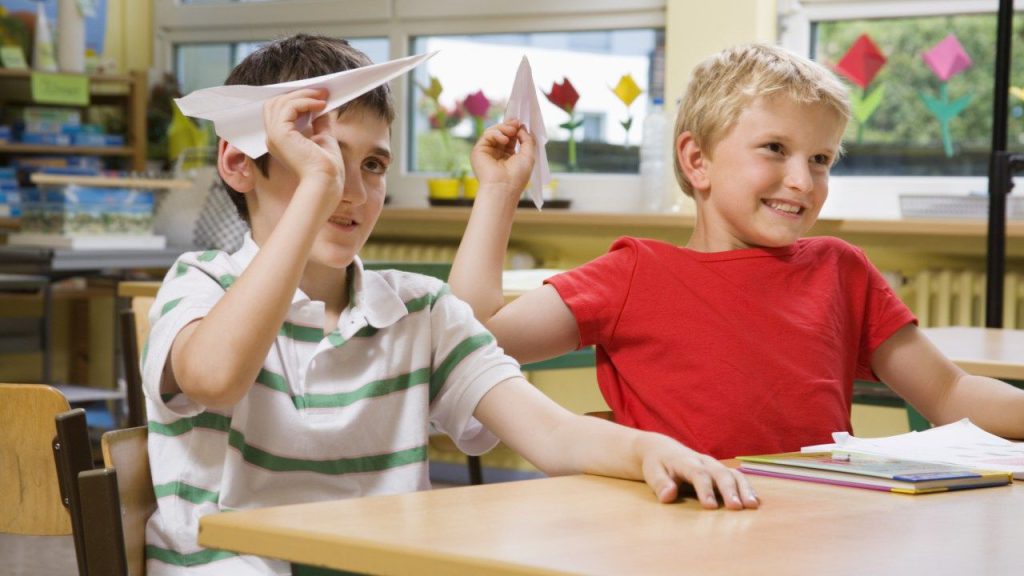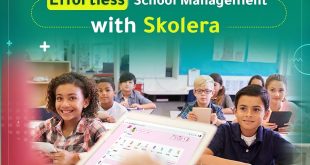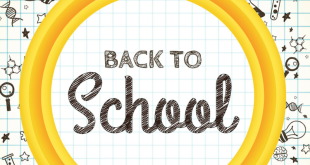You’ve created a great system to monitor your students’ positive and negative behavior in the classroom. But every year, you fail to keep track of students who just need more than the simple, traditional monitoring. How can you know for sure when your class system isn’t working for some students? What’s the best method to identify which students require extra attention? The key answer to these questions is “programs for tracking student behavior.” Take a look at this guide to learn more about the different strategies to implement for efficient student behavior monitoring.
Table of Contents
Top 13 reasons to keep track of student behavior
According to Kennelly and Monrad (2007), students who are likely to drop out of school are usually those who are not engaged in the classroom. That is why Kennelly and Monrad believe that monitoring and identifying student behaviour is a necessary step that teachers need to take to prevent the rates of dropping out.
This is how tracking student behavior supports teachers:
- Cooperate with parents to enhance a change of behavior in class and at home
- Observe negative behavior at the root cause
- Reinforce classroom lessons and instructional strategies
- Find out the appropriate strategy to support students’ behavior change
- Pinpoint students’ gaps in skills and knowledge
- Construct a warm and positive learning atmosphere for students
- Examine patterns in behavior and attitude to track student development

This is how tracking student behavior supports schools:
- Understand students’ needs
- Develop the whole school’s learning environment
- Implement a fair and systemic reward system
- Create a tolerant and safe student learning environment
- Construct proper educational and pedagogical practices
- Building an encouraging and enthusiastic school culture
Related: Modern Methods Of Teaching That Make An Awesome Classroom
What are examples of student behavior that you need to track?
When it comes to the term “student behavior,” teachers generally tend to associate it with a negative thing in which students need discipline. However, tracking student behavior shouldn’t be about only looking at a student’s misdemeanour or bad attitude.
To properly monitor students, a teacher has to account for both the positive and the negative aspects of a child’s behavior.
Of course, you have to also keep in mind that students’ behavior can be further divided into academic and social categories. Here are some examples of positive academic and social behavior to give you a general idea.
Examples of academic positive behavior
- Asking questions in class
- Participating in class discussions
- Thinking critically
- Maintaining good class performance
- Being prepared for class (questions, homework, etc)
- Coming up with innovative, creative answers to questions
Examples of social positive behavior
- Being attentive in class
- Helping other classmates when needed
- Displaying enthusiasm for learning
- Showing leadership skills in group activities
- Displaying good teamwork
- Avoiding side conversations while the teacher is talking
- Being a good listener to teachers and fellow classmates
- Accepting and respecting fellow classmates
4 Strategies: How do you keep track of student behavior?
Emily Moss, Ann O’Connor, & Reece L. Peterson devised a plan for behavioral monitoring at the University of Nebraska. They created a 4-strategy method that teachers can use to track student behavior in the most efficient way possible.
There are several methods for keeping an eye on students’ conduct. Despite the lack of research on the general subject of monitoring student behaviour, some tactics and intervention procedures have been proven to be successful.
Programs that monitor student behavior can be specific programmes that must be faithfully carried out by trained staff or those much less formal approaches that have been tailored and implemented by individual teachers or administrators to their needs and the needs of the students.
Several of these programs have proven to be effective in properly tracking the behavior of students. These are the four strategies that these programs use:
1) Check and Connect:
Check and Connect is an organised method for behaviour monitoring intended to stop dropouts and other negative behaviours. There are two main elements to Check and Connect, according to Riccomini, Bost, Katsiyannis, and Zhang. A designated person oversees the “Check” component’s daily or weekly monitoring of student levels of school participation.
Student behaviours including attendance, concentration, and involvement in class are examples of positive engagement. “The psychological experience of identification with one’s school” and a sense of being loved, respected, and a member of the school community can also be seen as a component of engagement.

The monitor can then “connect” through a number of tactics, such as developing connections, reinforcers, conversation or counselling, etc., based on signs from the “check” methods. Riccomini et al. believe that students should be taught and given experience using a five-step cognitive-behavioral problem-solving method at least once per month.
- Stop and think about the problem.
- What are some choices?
- Choose one.
- Do it.
- How did it work?
2) Check-In/Check-out:
This strategy has received quite significant support for being an efficient way to target behavior problems. According to Filter et al, the goals of this program are to:
(a) increase antecedent prompts for appropriate behavior
(b) increase contingent adult feedback
(c) enhance the daily structure for students throughout their school day
(d) improve feedback to families about student behavior
This CICO program is also devised according to a daily cycle in which:
- A student checks in with a designated adult in the morning to develop behavioral goals
- Carries around a point card which provides numerous opportunities for adult behavioral feedback throughout the day- a way to monitor behavior.
- Reviews behavior relative to goals with designated adult at the end of the day
- Gives the point card to a parent at the end of the day, which the parent then signs and returns to the school.
3) Behavior contracts:
Teachers frequently employ the behaviour contract, a straightforward positive reinforcement technique, to keep an eye on and modify students’ behavior. The instructor and student will decide on the precise behaviour to be discussed in the behaviour contract, and they should be characterised as “positive, pro-academic, or pro-social behaviors.”
The contract’s provision for adult reinforcement is fulfilled when the student complies with the contractual behaviours. Monitoring behaviour is essential for assessing how well the contract is going.
4) Daily behavior report cards:
Depending on input from the child’s teacher, daily behaviour report cards are a common intervention approach used to improve students’ behaviour. Although they are occasionally referred to as “report cards,” they are often independent of any formal report card and serve as a means of informing kids and their parents about general behaviour.
Daily behaviour report cards have been particularly successful with kids who demonstrate “externalising and/or disruptive behaviour problems”, despite being comparable to a Check in/Check out technique. There are many different ways to provide daily behaviour report cards, but they often include a “list of behaviors that have been deemed appropriate targets for intervention” and a system for assessing the target behaviour.
Ratings for behaviours can be given in terms of frequency, length, or completion rate.
The teacher’s regular input to the kid is the most crucial part of the daily behaviour report cards. These forms are then delivered to the parent or sent home with the kid for parental oversight. The child is frequently rewarded for doing well in school and at home.
Daily behaviour report cards, which aid in keeping the consistency between home and school, may be used independently or as part of a wider intervention. According to Volpe and Fabiano (2013), the best daily behaviour report cards have the following components:
- a rating form
- feedback regarding progress towards goals
- home-based rewards contingent on the child’s performance.
Read: 7 Methods to Develop Creative Thinking Skills for Students
Chris Huzinec’s 5-step plan to improve student behavior
Chris Huzinec, the Senior Education Consultant at Pearson, has devised a 5-step plan to help teachers improve student behavior. He specifically created this plan to encourage a “student-centred learning strategy that is dynamic enough to adapt to students’ needs. The 5-step plan is divided as follows:
Tracking
Huzinec believes that developing student behavior begins with the contribution of both the teacher and the student in the classroom. He states that to pinpoint and observe classroom behavior, teachers would need a proper and systemic method, which in turn will allow them to efficiently record student behavior.
Teachers can identify specifics of the issue behaviour and the circumstances that trigger and reinforce it in the context of the classroom by gathering valuable information. A good behavioural solution is built on tracking students’ behaviour over time, including their frequency and intensity.
Aggregate
According to Huzinec, “once a classroom tracking method is established, a complete picture of a student’s behavior can be constructed by aggregating the information and data into a student behavior profile.” An efficient behavioural management solution streamlines this phase by consolidating behavioural data in a single database.
Daily interactions and observations documented by the instructor can be calculated and reported to teachers, administrators, and other school staff. This makes it easier for teachers and administrators to obtain and assess information on students’ progress, including crucial metrics like the frequency of special incidents, particular behavioural goals, and inclusion rates.
Analyze
After the tracking and aggregating phases, comes the analysis phase which the teacher can use to obtain a proper profile of the student’s overall behavior. Now, the teacher would have the needed means and tools that will enable him/her to observe problems in the classroom.
This will also help him/her understand the possible causes of a student’s behavior. This phase is quite crucial for teachers to gain a full picture of the student’s behavior specifics and change throughout a period of time.
Intervene
Huzinec maintains that the knowledge required to develop a behaviour solution can be gleaned through evaluations of student behaviour that are data-rich. A helpful behavioural solution system equips instructors with tactics that let them handle behavioural difficulties and support and promote student growth.
Meaningful interventions, acceptable behaviours, and adaptable skills that children may employ to substitute negative behaviours are all parts of this process. These measures must be compliant with district and school policies and procedures while being adaptable enough to meet the requirements of particular students.
Communicate
Undoubtedly, this phase is essential to the completion and success of the whole process. The behavioural data and the method of encouraging positive behavioural change must be communicated in order to extend the synthesis beyond a classroom to every aspect of a student’s daily schedule.
The communication tools that can help develop a successful transformation of the student’s behaviours in all classrooms, at school generally, and at home are included in an essential behavioural solution system. It gives students, teachers, counsellors, administrators, and parents the tools for collaboration so that everyone is on the same page as behavioural solutions are developed.
Including ALL – Why Differentiated Instruction Is Important
Student behavior tracking software You Don’t Want To Miss
You must be thinking, “how will I ever have the time to implement these strategies amid all the workload I already have?” Well, here you’ll find behavior tracking software for schools that teachers and educators around the world have sworn by in the last couple of years.

Student behavior tracking tools
ClassDojo is a platform that unites school communities. It is widely used across the UK’s schools because it allows parents and teachers to communicate easily and think of the ideal learning environment for their kids. According to Moment Path, “with ClassDojo you can:
- Instantly share photos, videos and announcements on Class Story, or send private messages to parents.
- Give students a voice (and introduce them to tech) with digital student portfolios.
- Monitor noise levels and share your findings with visual charts to help students self-manage.”
-
Class charts
Who doesn’t love a good student behavior data tracking app that’s also FREE? Well, “Class charts” is exactly that! This software provides teachers with tracking and planning tools for the classroom. According to Moment Path, “Class Charts’ data-rich seating plans can save up to 30 hours teaching time per year for each teacher.“
“With Class Charts you can:
- Track individual students’ interactions with other pupils.
- Spot mismatched peers easily with color-coded reports.
- Customize achievements and behaviors to match wider school policies.”
This app is created by school educators and it is supposedly the “ultimate app for tracking Antecedent, Behavior and Consequence (ABC) data. With a simple interface, this app makes it easy for teachers and parents to discover patterns in their children’s behavior.”
“With Behavior Tracker Pro you can:
- Use a stop-start timer to track length of outburst.
- Get a deeper understanding of individual behaviors based on visual charts and graphing.
- Use the tracker across classrooms to track multiple students at the same time.”
Student behavior tracking has proved to be a great alternative to the traditional method of jotting down when a student talks without permission. It accounts for students with different needs, interests and capabilities to give a fair and proper analysis of the student’s development in behavior.
Nowadays, there are several efficient student behavior tracking tools that continue to make life easier for teachers, schools and even families.
Sources:
https://k12engagement.unl.edu/strategy-briefs/Behavior%20Monitoring%201-20-14%20chng4.pdf
https://k12engagement.unl.edu/strategy-briefs/Behavior%20Monitoring%201-20-14%20chng4.pdf
https://www.pearsonassessments.com/content/dam/school/global/clinical/us/assets/5steps-wp.pdf
https://www.linkedin.com/in/chris-huzinec-13026160/
 Skolera LMS Blog Educational Technology Articles and News
Skolera LMS Blog Educational Technology Articles and News




